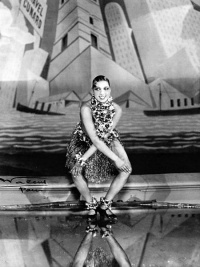African-American dance
From The Art and Popular Culture Encyclopedia

(Photo by Walery)
|
"African-American dances are those dances which have developed within African American communities in everyday spaces, rather than in dance studios, schools or companies and its derivatives, tap dance, disco, jazz dance, swing dance, hip hop dance and breakdance. Other dances, such as the lindy hop with its relationship to rock and roll music and rock and roll dance have also had a global influence." --Sholem Stein |
|
Related e |
|
Featured: |
|
Related e |
|
Featured: |
African American dances in the vernacular tradition (academically known as "African American vernacular dance") are those dances which have developed within African American communities in everyday spaces, rather than in dance studios, schools or companies. African American vernacular dances are usually centered on social dance practice, though performance dance and concert dance often supply complementary aspects to social dancing.
Placing great value on improvisation, African American vernacular dances are characterised by ongoing change and development. Because they exist in social spaces and their main 'purpose' is self-expression, they are continually changing to reflect the needs, interests and personalities of their participants. They are also often characterised by their 'stealing' or 'borrowing' from other dance traditions and any particular African American vernacular dance shows clear evidence of its relationship to other, earlier dances.
The term 'vernacular dance' is often critiqued by dancers within a tradition as being unnecessarily 'technical'. Despite these (very legitimate) issues, the term is commonly used in dance studies literature internationally.
There are a number of notable African American modern dance companies using African American vernacular dance as an inspiration, amongst these are the Alvin Ailey American Dance Theater and Dance Theatre of Harlem.
See also

